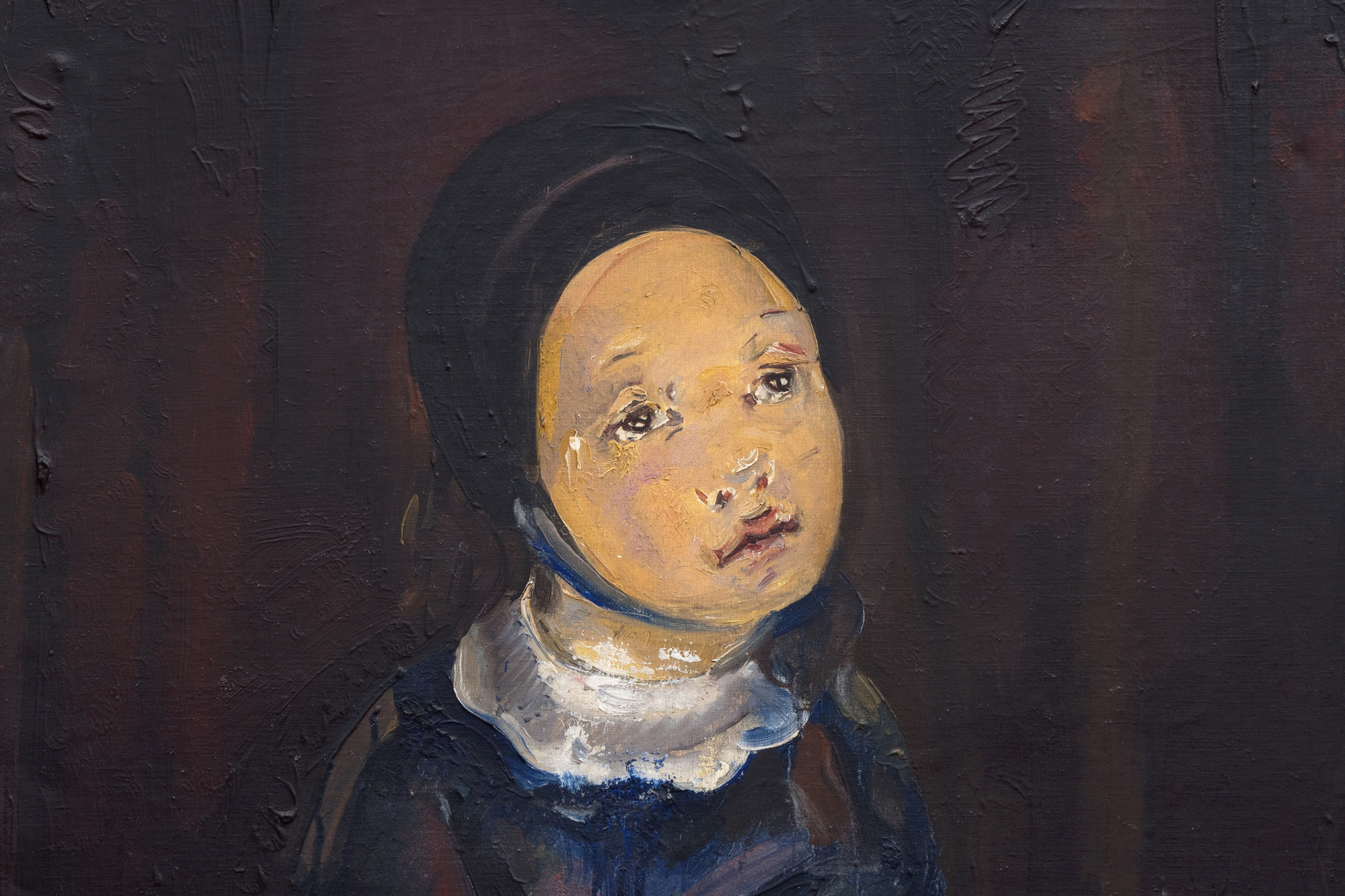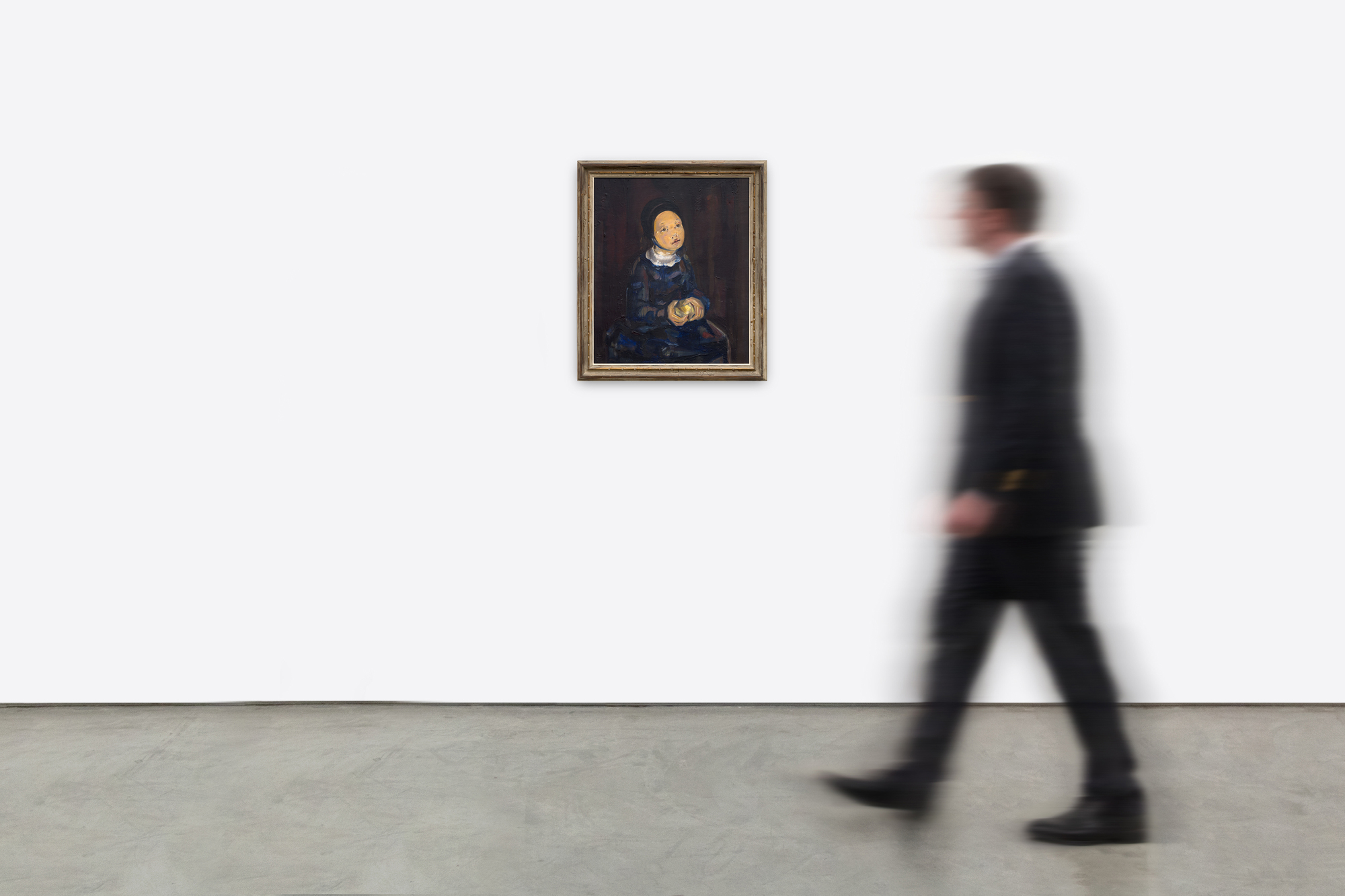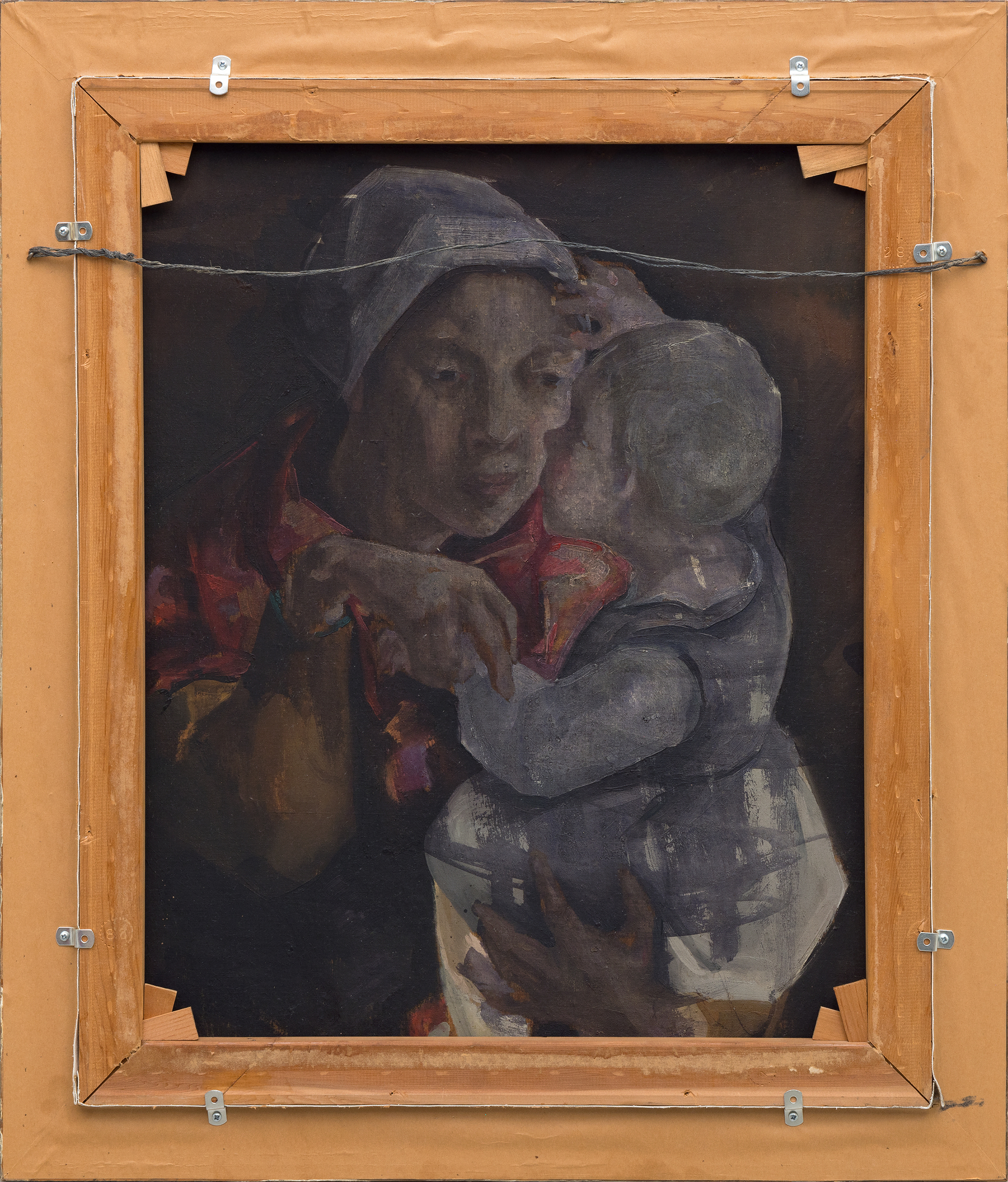MARIA BLANCHARD (1881-1932)










Provenance
Collection of Carmen Egea Gutierrez, Artist's NiecePrivate Collection, by descent from above
175,000
Blanchard's Cubist roots, prominent in the angular treatment of the hands and apple, are softened throughout the girl's modest attire, suggesting a spiritual or religious significance. The model's pious countenance and the muted palette of browns, grays, and blues further reinforce that the painting continues a thread of religious themes, as seen in Picasso's early masterwork, "The First Communion," and Blanchard's own "Girl at her First Communion." The apple held in hand introduces layers of symbolism, often representing knowledge, innocence, or temptation, an association that suggests an emotional transition, bridging childhood and deeper awareness.
Blanchard's ability to fuse Cubist form with symbolic narrative and emotional complexity makes this painting a poignant reflection of her evolution as an artist. She humanizes the rigid forms of Cubism while imbuing her subjects with depth and inner life.


